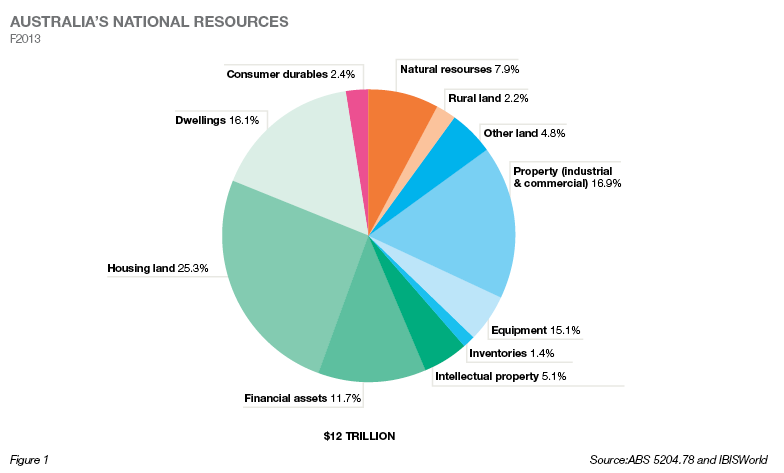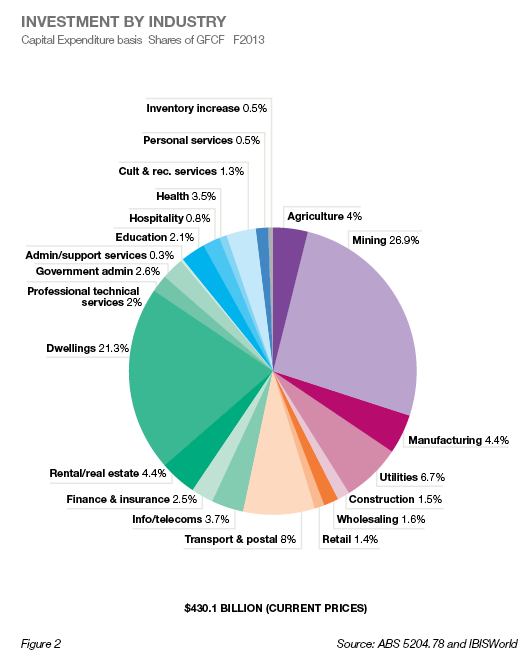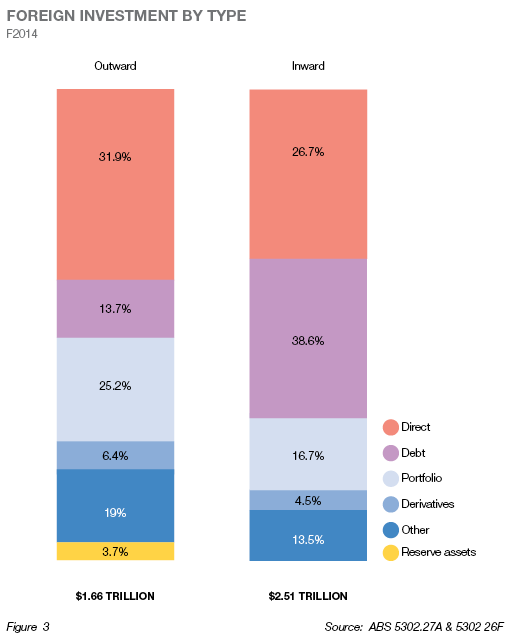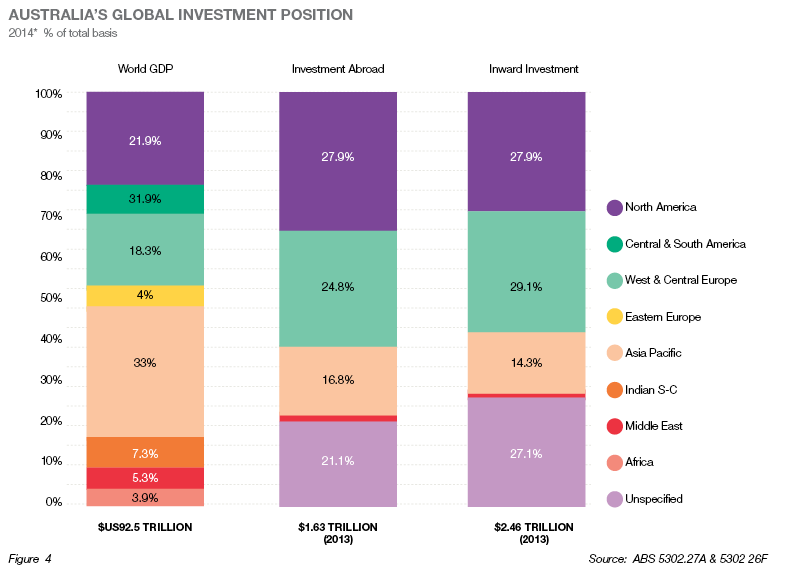As the Asia-Pacific region continues to become a more dominant player on the global stage, Phil Ruthven considers the benefits this will offer Australia in the future.
Australia’s net assets, or its wealth, were valued at around $9.8 trillion in the 2013 fiscal year, and will probably be valued at around $11.8 trillion by 30 June next year. This is around $1.25 million per household; not that households can get their hands on all of that as the government owns a fair chunk.
A large share of the total assets are owned or “mortgaged” (via debt instruments) by foreign nations. Currently, total foreign investment in Australia is around $2.5 trillion. So some 20 per cent of the nation’s total assets of $12 trillion is owned or “mortgaged” by other nations. Three per cent of which is attributable to Asian nations.
However, Australia has foreign investments of around $1.7 trillion of the world’s assets, meaning that, in net terms, foreign ownership and indebtedness is about 8 per cent of the nation’s assets.
Figure 1 shows the composition of our national resources in the 2013 fiscal year. These assets enjoy further growth through capital gains in most years and account for some 40 per cent of the total. But most of our wealth, the remaining 60 per cent, has been created in the form of property, intellectual property, equipment and financial assets via our GDP over a long time.

So which industries invest in our future, leading to greater wealth growth? Figure 2 shows the most recent official Australian Bureau of Statistics (ABS) breakdown for the 2013 fiscal year. The largest single investment was in the mining industry, which will surprise no one. The second largest was dwellings that are non-productive yet are assigned an imputed rental value by the ABS whether rented out or owner operated. But it is interesting to note that the agrarian age industries (agriculture and mining) and our industrial age industries (manufacturing, utilities and construction) nowadays represent less than 44 per cent of the total. However, adding dwellings lifts the goods-related industries total to nearly two-thirds of the $430 billion total in 2013.

Clearly the new age industries — services for the most part — require far less tangible assets to produce wealth, and more in intellectual property; with health and education being exceptions with a very low value-added contribution per $1 million of assets invested. The source of funds for investment in the nation’s future — more than $430 billion in 2014 — has long been a depreciation allowance for existing assets, around 55-60 per cent followed by savings (boosted in Australia by our superannuation regime) of around 30-35 per cent, leaving the remainder to foreign capital inflows.
The financial instruments comprising the foreign investment in Australia, and our investment overseas are shown in Figure 3. Debt and portfolio instruments dominate in both inward investment and outward investment; although Australia has relied more on direct equity than debt financing than foreigners and their inflows; so it would seem we prefer less leveraging. Our very high portfolio investment is a result of our superannuation, now valued at over $2 trillion (if you include unfunded super liabilities), and seeking offshore markets as well as onshore.

It is useful to see the sources and destinations of international investment in and out of Australia, as Figure 4 reveals. Three of the world’s eight geographic regions dominate inflows and outflows: North America; Western and Central Europe; and our own region of the Asia Pacific. These all are free-trade regions with one being a sovereign region (the EU). The other five regions play a tiny role in investment flows, and include: Eastern Europe (mostly the Russian Federation); Central and South America; the Indian sub-continent; the Middle East; and Africa. What is probable as we head further into this fascinating 21st century is that our region of the Asia Pacific, or even the Asia mega-region (including the Indian sub-continent) will become a bigger component of investment flows both in and out. Their share of world GDP, and the fact that three-quarters of our immigration and trade already take place in Asia, point to an exciting symbiotic relationship.

Latest news
Already a member?
Login to view this content


